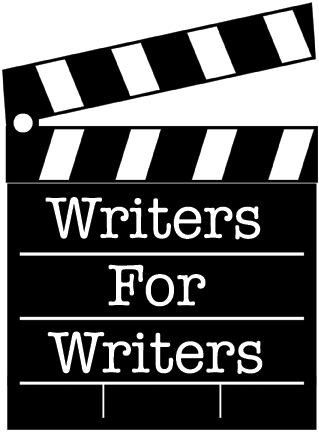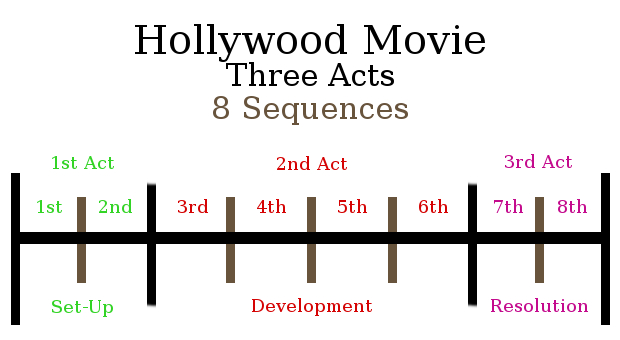This week Writers For Writers will begin a discussion of structure for new screenwriters, highlighting several popular methods and providing links for more information/further research into these ideas. It is important to note that not every method may make full sense/work best for your story/your understanding of structure, however, it is important to understand story structure as you begin crafting and creating your screenplay.
Eight Sequences – This is a bit more advanced and may not appeal to beginning writers, however, it may be of interest and would be a good exercise to practice when you are trying to outline your next piece.
SEQUENCE ONE – Inciting Incident
Establishes a main character and the “before” section of his/her life. What is wrong with this character or what does he or she need to learn to better him/herself or move forward in life? This will end with or include an inciting incident, a call to action or a push forward into the rest of the story.
SEQUENCE TWO – Problem
Sets up the problem that will be central to your script with hints at all possible obstacles. Make sure that this sequence ends when your character is stuck in this problem or predicament so that they must change their plans/life to start to solve it.
Act 2
SEQUENCE THREE – Raising the Stakes
Do this with an obstacle your character runs into along the way and make sure that there is no easy solution for your hero. You hero has a lot to lose and needs to solve this problem/get over this obstacle so that he/she can continue their journey.
SEQUENCE FOUR – Midpoint
A big sequence in which some culmination of everything that we have seen prior happens. The action continues to rise and there is still much more to do, but it is a good spot to provide a small win for you hero to build confidence and put your audience at ease.
SEQUENCE FIVE – Rising Action
Typically this will have something to do with a subplot and a B story which parallels the main story.
SEQUENCE SIX – End of Act Two
The all is lost or everything is terrible buildup and big letdown. Your hero should end broken and defeated, hopeless and at their lowest point.
Act 3
SEQUENCE SEVEN – Twist
Your protagonist is at his/her Dark Night of the Soul… but not for long! With a twist, new bit of information, new skill or newfound strength, your hero rises from the ashes and readies for the final confrontation!
SEQUENCE EIGHT – Resolution
Exactly what it sounds like. Your hero fights the villain, beats the monster, rescues the damsel and lives happily-ever-after. Clarity is important, but leaving your audience satisfied is the most important.
For more information about this Eight Act Structure, go here: https://www.emwelsh.com/blog/eight-sequence
You can also find even more information here: http://www.indywood.org/new-blog/2015/4/13/how-to-watch-a-movie-in-eight-sequences


Recent Comments